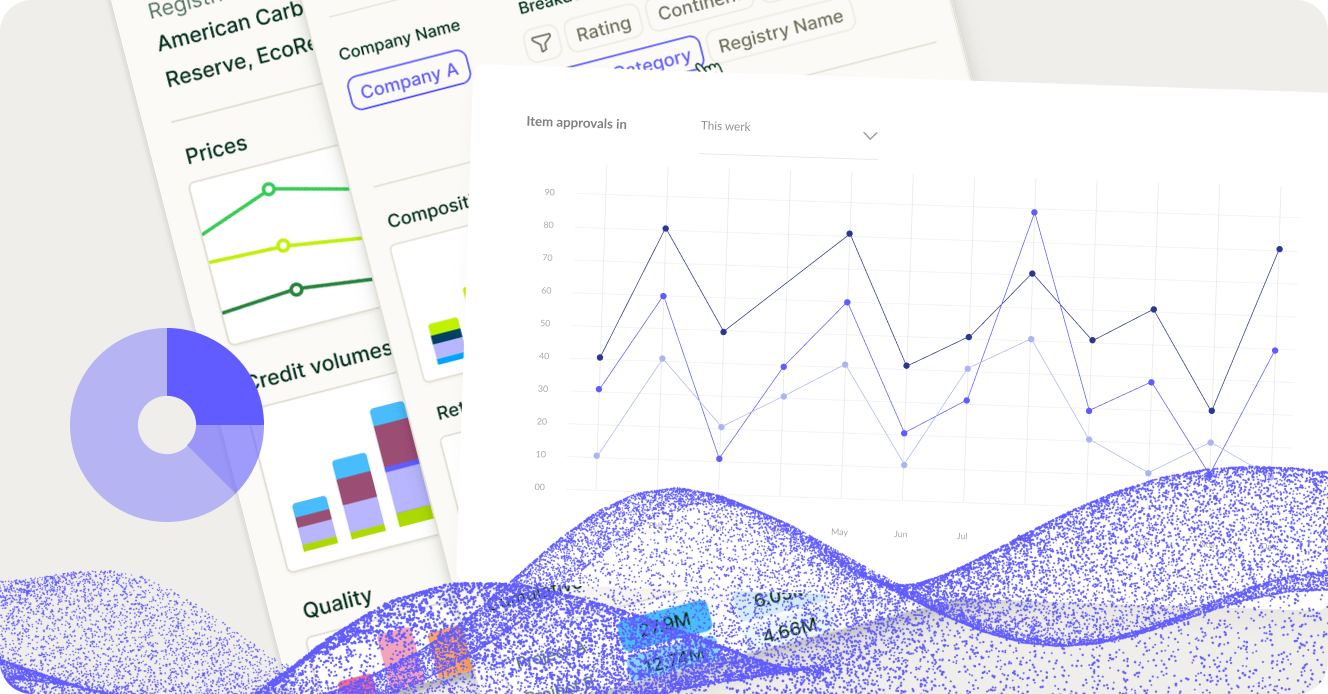“Over the years we’ve invested significantly in our field data team - focusing on producing trusted ratings. While this ensures the accuracy of our Ratings, it doesn’t allow the scale across the thousands of projects that buyers are considering.”
For more information on carbon credit procurement trends, read our "Key Takeaways for 2025" article. We share five, data-backed tips to improve your procurement strategy.

One more thing: Connect to Supply customers also get access to the rest of Sylvera's tools. That means you can easily see project ratings and evaluate an individual project's strengths, procure quality carbon credits, and even monitor project activity (particularly if you’ve invested at the pre-issuance stage.)
Book a free demo of Sylvera to see our platform's procurement and reporting features in action.
An assessment overview outlines Sylvera’s approach to assessing CCUS-EOR projects of potential strengths and risks for buyers to consider. Currently, data disclosures in the space do not meet our thresholds required to produce our in-depth, rigorous Ratings.
With the right data disclosures and collaboration with developers, we can provide the deep project-level insights needed to inform buyers’ investment due diligence and help bring these technologies to scale faster. If you’re a project developer interested in having Sylvera rate your project to help prove impact and optimize investment, reach out to our team.
Further details on the Sylvera assessment overview creation process can be found in our Frameworks & Processes White Paper.
For a deep dive into our CCUS-EOR ratings framework, download the assessment overview.
{{cta-component}}
What is Carbon Capture, Utilization, and Storage-Enhanced Oil Recovery (CCUS-EOR)?
CCUS-EOR stands for Carbon Capture, Utilization and Storage-Enhanced Oil Recovery, which refers to the integration of CCUS technologies with Enhanced Oil Recovery (EOR) techniques.
The main objective of CCUS-EOR is to capture carbon dioxide (CO2) emissions from industrial sources such as power plants or cement factories and use the CO2 to boost oil production from depleted or hard-to-reach reservoirs.
The CO2 captured during the process is injected into a reservoir, which helps to increase the pressure of the reservoir and facilitate the flow of oil. As a result, CCUS-EOR is storing CO2 permanently underground but also enhancing domestic energy production by increasing the amount of oil recovered.
At the date of this blog post, CCUS-EOR projects represent 73% of CO2 captured globally for CCUS projects each year and CCUS projects with issued credits were all CCUS-EOR. Therefore we are based our initial CCUS framework and white paper on CCUS-EOR.
Direct Air Capture (DAC) and Bioenergy with Carbon Capture and Storage (BECCS) are other CCUS categories that will be covered in their own frameworks.
How does Sylvera assess CCUS-EOR credit quality?
Sylvera develops project-type specific frameworks to capture material attributes of carbon projects and create comparable quality metrics that enable users to transact with confidence.
Our CCUS-EOR ratings synthesize data from diverse sources including: project documentation, socioeconomic data, media sources, government policy documents, academic publications, proprietary financial models and oil production models. These data inform our sub-indicators that roll up into our Sylvera rating and core scoring pillars.
Sylvera rating process for CCUS-EOR projects
Our rating is derived from a combination of carbon, additionality and permanence scores. These three core pillars are combined in a series of matrices to ensure that underperformance in one area does not get overshadowed by high performance in others.
Carbon score
Sylvera’s carbon score verifies whether a project is accurately reporting on the carbon removals achieved by the activity. If multiple vintages have been permitted, the carbon score is a vintage-weighted average score. Sylvera’s models rebuild carbon accounting from the ground-up, utilising third party grid data.
Additionality
Sylvera’s additionality score assesses whether (1) the projects’ activities would only have taken place as a result of the carbon project revenue and (2) the project has sold too many credits due to life cycle assessment underestimation or baseline overestimation.
The project should demonstrate that an appropriate life cycle assessment was conducted to account for any emissions associated with the sourcing, transport, production and utilization of the CO2. This should be conducted for cradle to grave rather than cradle to gate. Cradle to grave covers the whole lifecycle of the product including any co-products and the final decommissioning of the project.

Permanence
Sylvera’s permanence score refers to the risk that the avoided emissions will later be reversed and released back into the atmosphere. Sylvera’s permanence score assesses whether the carbon removed by the project is likely to stay sequestered based on geologic risks and anthropogenic risks.

Co-benefits
Sylvera’s co-benefits rating examines whether the project is implementing activities to support local biodiversity and communities, as well as the scale and likely impact of these activities.
Sylvera measures the impact CCUS-EOR project activities have on biodiversity and community by leveraging data provided by project developers, international organizations such as the International Union for Conservation of Nature (IUCN), the Integrated Biodiversity Assessment Tool (IBAT) and the United Nations (UN).
Download the white paper for a deep dive into our CCUS-EOR framework.
{{cta-component}}















